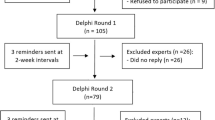Abstract
Background
The influence of superstition, moon calendars, and popular belief on evidence-based medicine is stunning. More than 40% of medical staff is convinced that lunar phases can affect human behavior. The idea that Friday the 13th is associated with adverse events and bad luck is deep-rooted in the population of Western industrial countries. The aim of the present study was to test the hypothesis that these myths are transferable to real-life surgery.
Methods
We analyzed the extent to which moon phases, zodiac signs, and Friday the 13th influence blood loss, emergency frequency, and intestinal perforations by evaluating the operation records of all 27,914 consecutive patients of our institution undergoing general, visceral, or vascular surgery between August 2001 and August 2010. Dates of surgery were allocated to lunar phases and to zodiac signs, as well as to Friday the 13th.
Results
A total of 111 lunar cycles and 15 Fridays the 13th occurred within the 3,281-day observation period. Patients’ characteristics did not differ in lunar phases, zodiac signs, or Fridays the 13th. Full moon phases, the presence of Friday the 13th, and zodiac signs influenced neither intraoperative blood loss nor emergency frequency. No statistical peaks regarding perforated aortic aneurysms and gastrointestinal perforations were found on full moon or Friday the 13th.
Conclusions
Scientific analysis of our data does not support the belief that moon phases, zodiac signs, or Friday 13th influence surgical blood loss and emergency frequency. Our data indicate that such beliefs are myths far beyond reality.
Similar content being viewed by others
References
Raison CL, Klein HM, Steckler M (1999) The moon and madness reconsidered. J Affect Disord 53:99–106
Leven KH (2001) «Heilige Krankheit», Mondsucht und Besessenheit: Vorstellungen von der Epilepsie in der Antike. Praxis 90:374–381
Holzheimer RG, Nitz C, Gresser U (2003) Lunar phase does not influence surgical quality. Eur J Med Res 8:414–418
Vance DE (1995) Belief in lunar effects on human behaviour. Psychol Rep 76:32–34
Foster RG, Roenneberg T (2008) Human responses to the geophysical daily, annual and lunar cycles. Curr Biol 18:R784–R794
Gutierrez-Garcia JM, Tusell F (1997) Suicides and the lunar cycle. Psychol Rep 80:243–250
Maldonado G, Kraus JF (1991) Variation in suicide occurrence by time of day, day of the week, month, and lunar phase. Suicide Life Threat Behav 21:174–187
Barr W (2000) Lunacy revisited. The influence of the moon on mental health and quality of life. J Psychosoc Nurs Ment Health Serv 38:28–35
Chapman S, Morrell S (2000) Barking mad? Another lunatic hypothesis bites the dust. BMJ 321(7276):1561–1563
Laverty WH, Kelly IW (1998) Cyclical calendar and lunar patterns in automobile property accidents and injury accidents. Percept Mot Skills 86:299–302
Scanlon TJ, Luben RN, Scanlon FL et al (1993) Is Friday the 13th bad for your health? BMJ 307(6919):1584–1586
Veale D (1995) Friday the 13th and obsessive compulsive disorder. BMJ 311(7011):963–964
Wolbank S, Prause G, Smolle-Juettner F et al (2003) The influence of lunar phenomena on the incidence of emergency cases. Resuscitation 58:97–102
Seelig MG (1905) Superstition in medicine. Med Library Hist J 3:174–184
Bächtold-Stäubli H (2000) Handwörterbuch des deutschen Aberglaubens. de Gruyter, Berlin
Coriat IH (1911) Abnormal psychology. Moffat and Yard, New York
Ali Y, Rahme R, Matar N et al (2008) Impact of the lunar cycle on the incidence of intracranial aneurysm rupture: myth or reality? Clin Neurol Neurosurg 110:462–465
Andrews EJ (1960) Moon talk: the cyclic periodicity of postoperative hemorrhage. J Fla Med Assoc 46:1362–1366
Nayha S (2002) Traffic deaths and superstition on Friday the 13th. Am J Psychiatry 159:2110–2111
Kredel M, Goepfert C, Bassi D et al (2006) The influence of the weather and the phase of the moon on post-operative nausea and vomiting. Acta Anaesthesiol Scand 50:488–494
Kuehnl A, Herzog M, Schmidt M et al (2009) The dark side of the moon: impact of moon phases on long-term survival, mortality and morbidity of surgery for lung cancer. Eur J Med Res 14(4):178–181
May M, Braun KP, Helke C et al (2007) Lunar phases and zodiac signs do not influence quality of radical cystectomy—a statistical analysis of 452 patients with invasive bladder cancer. Int Urol Nephrol 39(4):1023–1030
Wunder E, Schardtmueller M (2002) Moduliert der Mond die perioperative Blutungsgefahr und andere Komplikationsrisiken im Umfeld von chirurgischen Eingriffen? Zeitschrift für Anomalistik Band 2:91–108
Promberger R, Ott J, Mikola B et al (2010) Lunar phase does not influence the incidence of postoperative haemorrhage after thyroid surgery: an analysis of 26,852 operations. Eur Surg 42(2):72–76
Guillon P, Guillon D, Pierre F et al (1988) Seasonal, weekly and lunar cycles of birth. Statistical study of 12,035,680 births. Rev Fr Gynecol Obstet 83(11):703–708
Waldhoer T, Haidinger G, Vutuc C (2002) The lunar cycle and the number of deliveries in Austria between 1970 and 1999. Gynecol Obstet Invest 53(2):88–89
Peters-Engl C, Frank W, Kerschbaum F et al (2001) Lunar phases and survival of breast cancer patients—a statistical analysis of 3, 757 cases. Breast Cancer Res Treat 70:131–135
Meiser A, Casagranda O, Skipka G et al (2001) Quantification of blood loss. How precise is visual estimation and what does its accuracy depend on? Anaesthesist 50:13–20
Bose P, Regan F, Paterson-Brown S (2006) Improving the accuracy of estimated blood loss at obstetric haemorrhage using clinical reconstructions. Bjog 113:919–924
Wake R, Fukuda D, Yoshiyama M et al (2007) The effect of the gravitation of the moon on acute myocardial infarction. Am J Emerg Med 25:256–258
Acknowledgments
The authors greatly appreciate the help of Ms. Catherine Black, University of Manchester, for proofreading and substantive contributions concerning language and style of the manuscript.
Conflict of interest
None.
Author information
Authors and Affiliations
Corresponding author
Additional information
Jochen Schuld and Jan E. Slotta contributed equally to this study.
Rights and permissions
About this article
Cite this article
Schuld, J., Slotta, J.E., Schuld, S. et al. Popular Belief Meets Surgical Reality: Impact of Lunar Phases, Friday the 13th and Zodiac Signs on Emergency Operations and Intraoperative Blood Loss. World J Surg 35, 1945–1949 (2011). https://doi.org/10.1007/s00268-011-1166-8
Published:
Issue Date:
DOI: https://doi.org/10.1007/s00268-011-1166-8




